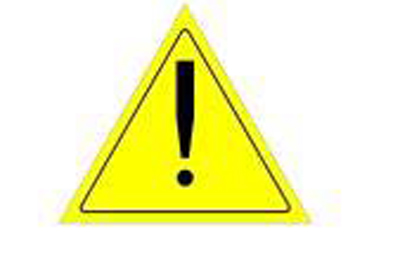Seakeeper 2 Operation Manual (90489-3); S/N 2-232-1564 to Current
4.1 Power Failures, Alarms, and Troubleshooting Introduction

The operator should physically examine the Seakeeper following an alarm. Continuing to reset alarms without service intervention can result in damage or personnel injury.
_____________________________________________________
The Motor Drive Box contains a voltage hazard and the cover should not be removed while the flywheel is spinning or the DC input voltage is present. This voltage hazard exists even if the flywheel is coasting down and the supply voltage has been shut off.
_____________________________________________________
The Motor Drive Box contains a voltage hazard and the cover should not be removed while the flywheel is spinning or the DC input voltage is present. This voltage hazard exists even if the flywheel is coasting down and the supply voltage has been shut off.
The Seakeeper 2 has safety features, such as alarms and warnings, that pop-up on the Seakeeper
Application and are signaled on the ConnectBox to protect the Seakeeper as well as the vessel. The brake can be locked from the Application, ConnectBox or by shutting off DC power at the supply breakers, preventing the Seakeeper from precessing.
In the event of a power failure, the brake automatically locks the Seakeeper so it cannot generate anti-rolling torque loads. When a power failure occurs, it is important to identify the three sources of power to the Seakeeper 2:
- 12 VDC high current powers the Motor Drive Box to drive the motor inside the Seakeeper.
- 12 VDC low current powers the Seakeeper for all the control electronics.
- Seawater Pump 12 VDC Input powers the seawater cooling pump.
These are supplied on cables which are shown on Drawing No. 90470 – Seakeeper 2 Cable Block Diagram.
Voltage-Related alarms include the following:
- DC INPUT VOLTAGE HIGH – Code 40
- Alarms when low current DC input voltage varies from a reasonable range for the design voltage.
- DC INPUT VOLTAGE LOW – Code 41
- Alarms when low current DC input voltage varies from a reasonable range for the design voltage.
- DC INPUT VOLTAGE LOW [SPEED LOSS DURING OPERATION] – Code 111
- DC INPUT VOLTAGE LOW [SLOW SPOOL UP] – Code 112
- Code 11 and 112 occur to adjust power consumption as voltage drops below 11.1 VDC to prevent battery depletion. If battery voltage drops to 10 VDC, code 167 will trigger.
- BATTERY STATE OF CHARGE – Code 123
- This alarm alerts the operator of a low state of charge (SoC) if the Seakeeper is receiving a SoC signal over the NMEA 2000 network and SoC based protection is enabled in the Battery Monitor Configuration. The SoC will depend on the cut-off threshold slider setting (see Section 3.3).
- The Battery icon on the Home screen will appear red and empty.
- HIGH CURRENT DC VOLTAGE LOW – Code 167
- HIGH CURRENT DC VOLTAGE HIGH – Code 168
- This alarm protects the Seakeeper 2 from an over-voltage of 16 VDC or higher.